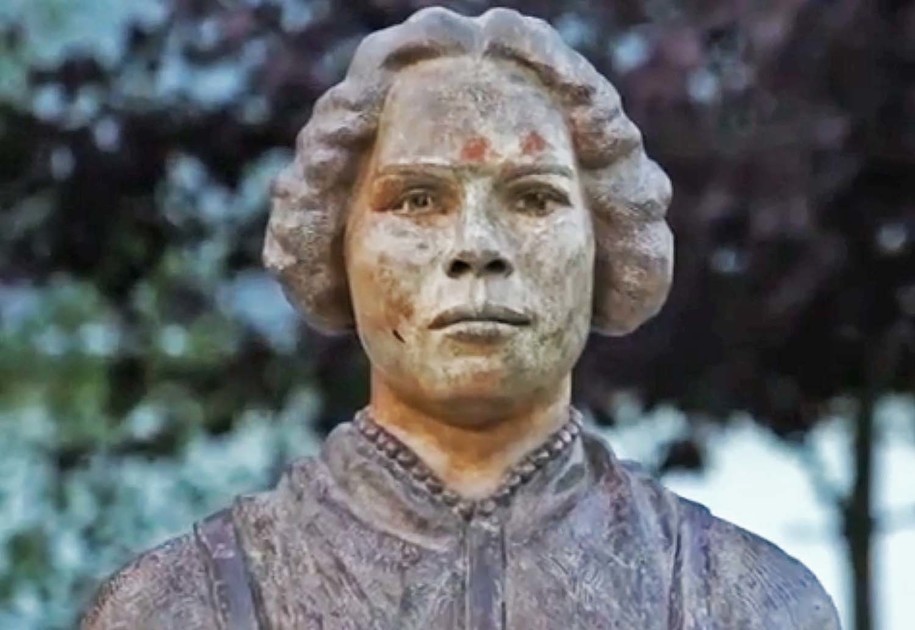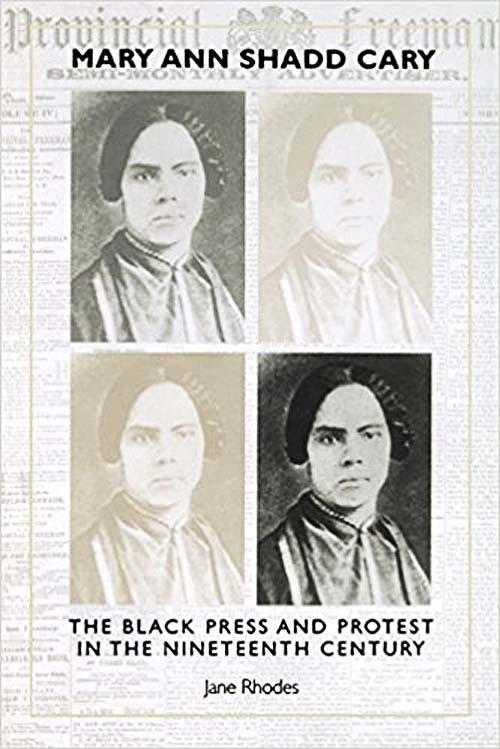Watching and reading news stories about immigrants in the U.S. fleeing to Canada for fear of being deported by Donald Trump’s xenophobic policies prompted thoughts of a past when black Americans fled to Canada to escape slavery. While U.S. schools have taught quite a bit in recent years about the Underground Railroad, much less has been taught about what actually happened to black folks once they got there.
As Women’s History Month draws to a close, it would be interesting to examine some of what I’ve learned about Canada, blacks from the U.S. settling there, abolition, and women. Years ago I spent time researching an oral history of my mom’s great aunt Annie, who fled enslavement in Loudoun County, Virginia, as a young girl and made it all the way to Canada on foot. According to my aunts who knew her, Annie and another girl were smuggled out of Loudoun by a free black bargeman. They then walked overland, sleeping in fields.
One story they remember her telling is about approaching a house owned by white people to ask for food. They were allowed to sleep on the porch next to the family dog to stay warm but were given no blankets. Not quite the passage one imagines when “underground railroad” is mentioned in school. Aunt Annie didn’t like to talk much about her experience in slavery—or at least didn’t talk about it much in front of children. My aunts only remember that she ran because she said she had “a very mean mistress.” She did not remain in Canada after slavery ended and returned to the states, where she married and bought a home back in Loudoun.
In the process of doing that research, I happened upon the story of Mary Ann Shadd-Cary, a free black woman, abolitionist, feminist, and publisher.
Born in Wilmington, Delaware in 1823, Mary Ann Shadd was a teacher, journalist, and outspoken leader of the Canadian emigration movement during the 1850s. Shadd grew up in an abolitionist household. She was the eldest child of Abraham Doras Shadd, a prosperous shoemaker and veteran of the War for American Independence, and Harriett Parnell Shadd. Like many northern elite free blacks, Shadd received a Quaker education. It was through her activist family, teaching and journalism that Shadd secured a pathway into antislavery politics, joining other disenchanted blacks who advocated voluntary relocation to places where slavery had been abolished. Western Canada, now southern Ontario, became a geographic focal point for many black nationalist emigrationists.
Settling in Canada was a symbolic gesture as well as a concrete effort to establish independent free black settlements. Shadd herself wrote of the hypocrisy of the United States, which had identified as a democracy, yet supported slavery. In Canada, part of the British monarchy, blacks would find political and economic freedom. One of the central goals of emigrationists was to establish independent black farming communities, free of white control. During her residence in Chatham, Ontario, Shadd struggled to keep her school afloat. She eventually abandoned teaching and turned to journalism, taking over the Provincial Freeman in Windsor, Ontario in 1853. As the primary editor of the Freeman, Shadd traveled throughout Ontario and parts of the United States in an effort to drum up subscriptions for the fledgling newspaper. In the process, she wrote essays about her travels, revealing her support for sex and race equality. After the Civil War and the death of her husband, Thomas Cary, Mary Shadd Cary returned to the United States, where she earned a law degree from Howard University. She died of stomach cancer in Washington, D.C. in 1893.
She was the second black woman to earn a law degree in the U.S.
At the age of 60 she became only the second Black woman in the United States to earn a law degree behind Charlotte E. Ray, also a Howard University School of Law graduate. Shadd Cary, post-slavery, adopted women’s rights as one of her causes. In her later years she began working alongside Susan B. Anthony in the National Woman Suffrage Association, even testifying before the House of Representatives for women’s right to vote. Mary Ann Shadd Cary would eventually become the first Black woman to vote in a national election due to her efforts.
While Annie and Mary Ann were both both black women, their Canadian sojourns were very different. Though both ended up returning to the U.S., one fled north to escape brutality while the other went to Canada to fight against it.
For a detailed biography of Shadd Cary, a suggested read is Mary Ann Shadd Cary: The Black Press and Protest in the Nineteenth Century, by Jane Rhodes
“Rhodes provides a well-researched, balanced, clearly written assessment of the extraordinary life of this trailblazing African American feminist and reformer.” ―Choice
“In this book we see how a courageous and pugnacious journalist-activist fought arduously to attain freedom from male dominance and establish a model for future feminists.” ―Quill & Scroll
“Jane Rhodes’ wonderful biography of Mary Ann Shadd Cary… is an insightful and moving portrait of a determined and resourceful Black woman who put all she had into ending slavery and securing full human rights for her people.” ―Darlene Clark Hine
Mary Ann Shadd Cary was a courageous and outspoken 19th-century African American who used the press and public speaking to fight slavery and oppression in the United States and Canada. Her life provides a window on the free black experience, emergent black nationalisms, African Americans’ gender ideologies, and the formation of a black public sphere
Reviewer Felecia Jones Ross writes:
This biography is a culmination of Jane Rhodes’ years of scholarship on the Canadian antebellum African-American experience. The author’s ability to piece together information from secondary sources and from Cary’s scattered and incomplete writings represents what is required in producing African American historical scholarship. As a result, readers learn about the interactions between the different factions of free antebellum African American activists. Furthermore, readers see celebrated African American and white figures such as Frederick Douglass and Harriet Beecher Stowe from the perspective of Cary, who did not necessarily agree with their stances.
In her review in the Journal of Negro Education Jane Rhodes was critical of flaws in the scholarship in this biographical Canadian production about Shadd. But I’m posting a clip because it includes interviews with some of Shadd’s descendants.
This documentary focuses on the 10-year period when Shadd Cary lived in Canada, and it uses her life to illustrate the experiences of African Canadians in the 1850s. Translating this story onto film is a difficult task as there are few photographs to illustrate the narrative, and limited documentary sources. Thus, this filmmaker resorts to historical reenactment to create some visual impact. Actors portray Shadd Cary and her associates, while a narrator tells the story. The film does a good job of explaining some of the issues confronting these Black communities established by missionaries and settled by former slaves. The film also does its best to evoke Shadd Cary’s distinctive, and often radical, political voice as she fought against slavery and discrimination, and championed the cause of Black emigration. Perhaps most interesting are the interviews with Shadd Cary’s descendants, who give a contemporary face to the African Canadian presence.
There is not a lot of visual material available on Shadd. This film was made as a result of some of Shadd’s letters being found in a family home which was being demolished.
The film’s title is Mary Ann Shadd Revisited: Echoes from an Old House.
This film, by Allison Margot Smith, is about a collection of letters to and from African American abolitionist Mary Ann Shadd between 1851 and 1863 – years that she lived in Canada. The letters were left in her house near Chatham Ontario when she returned to the U.S.A. and were eventually forgotten. They were accidentally rediscovered in 1974 by the then owners of her house, when they had the house torn down, just before the rubble was burned. When offered, the letters were accepted by Archives of Ontario for preservation. The premise of Smith’s film is that, had the letters been found before the 1960s, they might not have been offered to, or accepted by the Archives. She argues that it was the emergence in the 1960s of ideas about Social History, the Civil Rights Movement and the Women’s Movement that led the owners of the letters and the Archives to realize their importance.
You can read more on Smith’s thoughts on making the film here.
While exploring Shadd, I encountered the histories of black settlements in Canada—which she critiqued.
Shadd used her newspaper to comment on all aspects of black life in Canada, but she focused especially on problems of racial discrimination and segregation. She assailed anyone, blacks and whites alike, who sought to compromise with slavery, and she particularly castigated her fellow blacks who were prepared to accept second-class status. She reserved her greatest vituperation, however, for self-segregated black settlements: to her, these settlements only fostered discrimination, and she urged blacks to seek assimilation into Canadian society. John Scoble and Josiah Henson of the Dawn settlement were pilloried almost as exhaustively as Bibb, while grudging approval was granted to the Elgin settlement under William King.
What was the Elgin Settlement?
Reverend William King, a Presbyterian minister trained in Scotland, married a Southern belle in Louisiana where he had been teaching. Upon the deaths of his wife, child, and later his father-in-law, King, an abolitionist, found himself the owner of a number of slaves. He opposed slavery, but he could neither sell them nor leave them since they would be re-enslaved, so he opted to take them to Canada West where the Presbyterian Church had placed him. He arranged for the fertile lands near Chatham, Ontario to be purchased through the Elgin Association. King, along with the 15 former enslaved Africans, formed the Elgin Settlement, or Buxton.
The new residents were provided with many rules and advice about how to create and sustain the community. The school he operated provided a high level of education with graduates going on to study at the University of Toronto. The success of this Black community in agriculture, coupled with the reputation of the school, led to a rise in the population. By the 1860s at least 2,000 people lived there. The success of this Black settlement has been commemorated; it is now a national historic site, a cultural landscape of early African-Canadian life preserved in rural Ontario.
I have not yet found a record yet of my great-aunt Annie in Canada while wading through the materials now available online about the numerous black settlements that flourished there. But I’m grateful that searching for her led me to Shadd. Perhaps future research on black women’s experiences in Canada will eventually lead me to a record of Annie’s time there.
Women’s history may be only one month long on the calendar, but for me it is important all year round.



